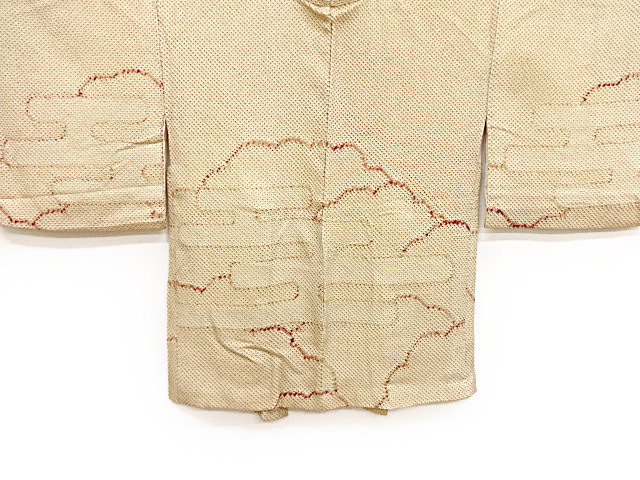NORTHWEST RAIN KOSODE
ACRYLICS ON CEDAR W/RED OAK FRAME
SUMMER 2016
ACRYLICS ON CEDAR W/RED OAK FRAME
SUMMER 2016
The Pacific Northwest is famous for its rain, and we are so thankful that this is so (although the full effects of a changing global climate are still to be seen). Water is life, so I’ve learned to celebrate the rain rather than to dread it. The lush vegetation surrounding us is a direct result of our abundant rainfall. This is especially true on the Olympic Peninsula. While living by Neah Bay I recorded rainfall from 1983 through to 2002, and we averaged 105.81 inches per year during that time (with a high of 144.77 inches in 1997). For most people that is much wetter that they are used to and prefer. I know many who hate rainy days and sulk in the confines of their homes just waiting for the sun to reappear. For those of us who love the gray of a rainy day, the rain is most welcomed. Anyway, who’s going to stop it, and when it rains daily for months at a time, you just have to get out in it and on with living.
I recently saw a design by Komox/Kwakwaka’wakw artist Andy Everson entitled Rain (see Karen & Ralph Norris, Contemporary Art on the Northwest Coast: Salish, Nuu-chah-nulth, and Makah, ©2010, p.127) and it inspired me to do a painting on this Northwest-defining subject. I wanted to blend Northwest Coast native art with Japanese textiles in formulating my design. The overall design is of a Japanese kosode, the smaller-sleeved precursor to the kimono worn by both men and women. The border represents the kosode, and the design is arranged within it showing rain falling from clouds to form rivers and streams. I looked at many kosode designs from Hayao Ishimura and Nobuhiko Maruyama’s Robes of Elegance: Japanese Kimonos of the 16th-20th Centuries (©1988) to help with the composition and arrangement of the design elements. The “raindrops” come from Northwest Coast Native art traditions and are a stylized design representing the spirit of life contained in each drop. The clouds are also a stylized Japanese design that I first saw on the introduction to NHK’s “Seasoning the Seasons” TV program. I love the intricate Japanese resist tie-dying technique of kanoko-shibori found on many kosode and other textiles. Kanoko means deer and the shibori pattern of dots are meant to resemble the white spots of a fawn (see p.242 for this technique description and look at the many examples found throughout Robes of Elegance by Ishimura and Maruyama). I have wanted to use a painted version of shibori and was able to do so within these stylized clouds. I made the frame out of red oak using pegged, hand-joined, mortise-and-tenon construction methods. I used the Japanese technique (shou-sugi-ban) of charring and oiling the oak to finish the frame.
DIMENSIONS: HEIGHT: 29 inches
WIDTH: 29 inches
PRICE $690
I recently saw a design by Komox/Kwakwaka’wakw artist Andy Everson entitled Rain (see Karen & Ralph Norris, Contemporary Art on the Northwest Coast: Salish, Nuu-chah-nulth, and Makah, ©2010, p.127) and it inspired me to do a painting on this Northwest-defining subject. I wanted to blend Northwest Coast native art with Japanese textiles in formulating my design. The overall design is of a Japanese kosode, the smaller-sleeved precursor to the kimono worn by both men and women. The border represents the kosode, and the design is arranged within it showing rain falling from clouds to form rivers and streams. I looked at many kosode designs from Hayao Ishimura and Nobuhiko Maruyama’s Robes of Elegance: Japanese Kimonos of the 16th-20th Centuries (©1988) to help with the composition and arrangement of the design elements. The “raindrops” come from Northwest Coast Native art traditions and are a stylized design representing the spirit of life contained in each drop. The clouds are also a stylized Japanese design that I first saw on the introduction to NHK’s “Seasoning the Seasons” TV program. I love the intricate Japanese resist tie-dying technique of kanoko-shibori found on many kosode and other textiles. Kanoko means deer and the shibori pattern of dots are meant to resemble the white spots of a fawn (see p.242 for this technique description and look at the many examples found throughout Robes of Elegance by Ishimura and Maruyama). I have wanted to use a painted version of shibori and was able to do so within these stylized clouds. I made the frame out of red oak using pegged, hand-joined, mortise-and-tenon construction methods. I used the Japanese technique (shou-sugi-ban) of charring and oiling the oak to finish the frame.
DIMENSIONS: HEIGHT: 29 inches
WIDTH: 29 inches
PRICE $690
Detail Showing Kanoko-Shibori Cloud Painting
Vintage Kimono Showing Kanoko-Shibori Clouds


